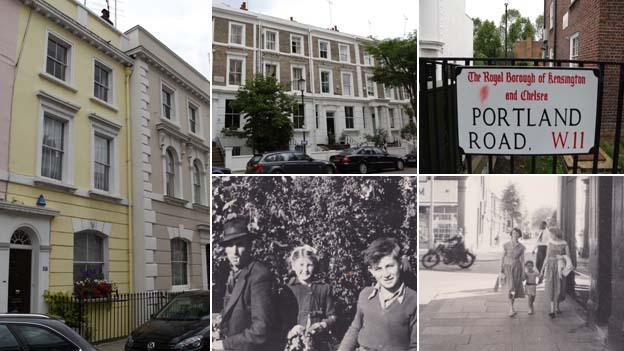Brick Lane: Gentrification threat to Spitalfields Bangladeshi community
- Published
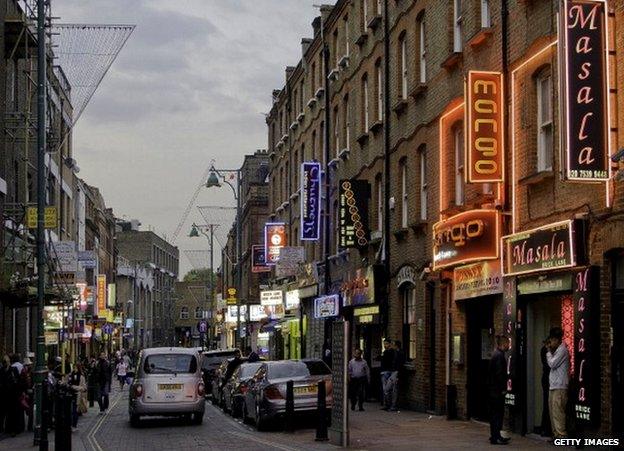
The Bangladeshi community that made Brick Lane famous for its curries is at risk of being torn apart. But while gentrification is usually blamed on the forces of capitalism, in this case the driving force is a charity.
In a third floor flat of a 1930s ex-council block, Saleh Ahmed looks up from the kitchen table where his wife Rusnobun is preparing a late afternoon meal of spiced tuna kebabs.
He takes a few for himself and carries the rest still steaming down the corridor for their son Kabir, who owns the flat next door. Along the way he dodges his two grandchildren chasing each other around the balcony.
This is Carter House on Holland Estate, in the heart of Spitalfields' Bangladeshi community. It is also prime development land.
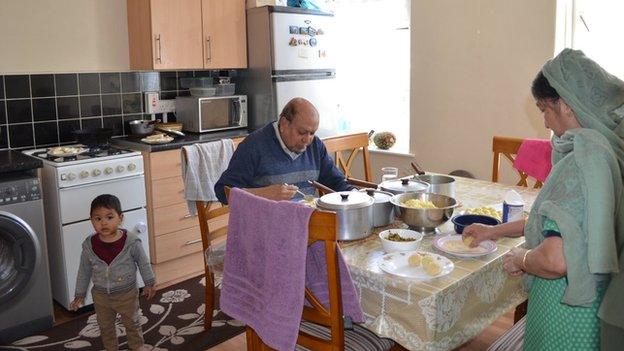
Generations of Bangladeshi families live in flats on the estate

The estate is on prime development land close to the Gherkin and the City of London
To the east is the Gherkin, to the left is Petticoat Lane Market and around the corner is Brick Lane, with its famous curry houses., external
Social landlord EastendHomes has drawn up plans to demolish the ex-council estate, replacing it with modern flats, most of which it plans to sell for profit on the private market.
It says the proceeds would fund refurbishment of its other social housing stock and help it to provide affordable housing for local people.
However, there is a human price to pay.
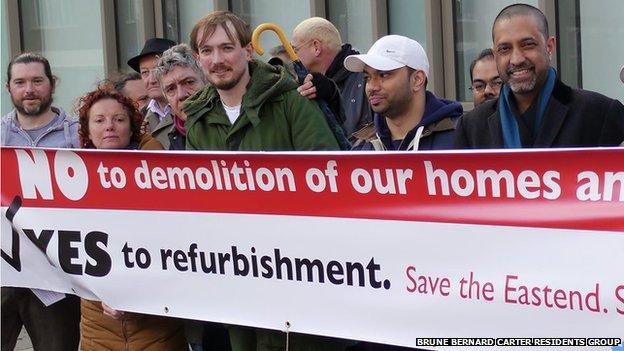
Most of the 600 residents, tenants and leaseholders fear they will have little choice but to leave. They say it will be too expensive to either buy or rent homes in this now desirable area and their decades-old community faces fragmentation.
At a meeting on 8 April residents say they were told by an EastendHomes officer their flats were "unfit for human habitation".
Kabir Ahmed, a 40-year-old secondary school teacher, says, "EastendHomes will say anything to justify knocking down our homes for profit."
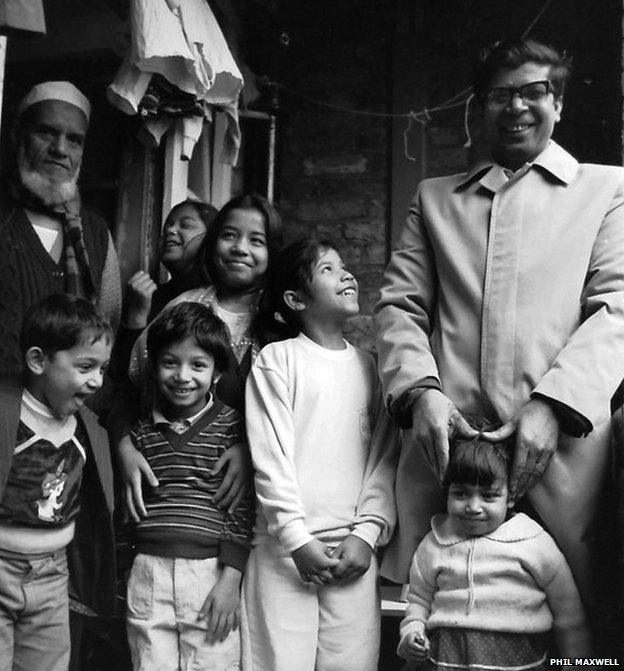
Holland Estate experienced an influx of Bangladeshi residents in the 1980s
Carter House comprises about 60% privately-owned units and 40% social housing. What most of the leaseholders and social housing tenants have in common is the desire to stay in their homes, but an initial demolition notice was served in March 2014.
EastendHomes said it had not officially declared the flats unfit for human habitation and the estate had been repaired a few years ago to meet the government's Decent Homes Standard, external.
It has already knocked down some smaller blocks on the estate at Denning Point and replaced them with new-build flats called Kensington and Sloane Apartments. A two-bed flat is being offered for nearly £3,000 a month rent, while a one-bed flat is for sale for £600,000.
That compares to the £546 per month Mr Ahmed's father pays for his two-bed flat through the social housing scheme and a maximum of £350,000 residents calculate they would be offered by EastendHomes in the event of a compulsory purchase order, based on figures the charity has shown them.
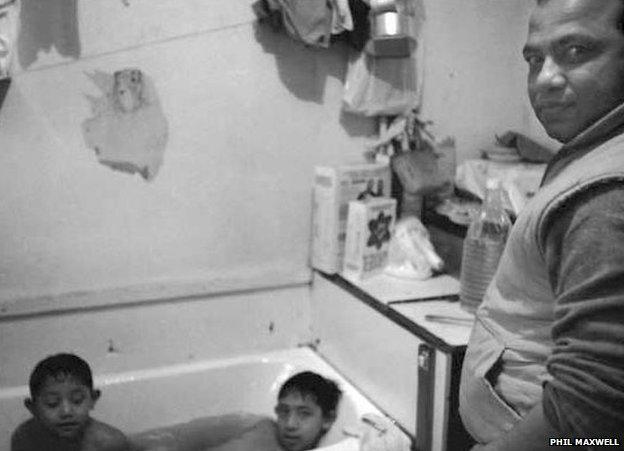
In the 1970s overcrowding was common among Spitalfields' Bangladeshi community
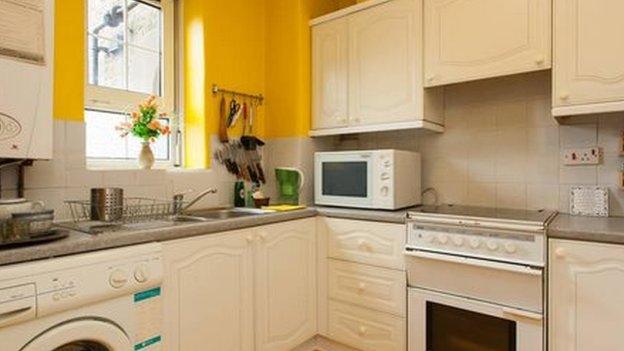
The flats have been modernised and all meet the government's "decent homes standard"
Walking tours visit the estate at least three or four times a day and tourists snap hundreds of photos of the homes where the "real Eastenders live". But for how long will this corner of the East End remain authentic?
It is a situation familiar across many inner-city areas of London.
In Brixton, campaigners were sprayed with CS gas during an anti-gentrification protest in April. Peckham Vision, a group representing businesses, churches and other community organisations said in 2013 local people were being forced out of the area because of rising costs.
"Younger Bangladeshis who grew up around Spitalfields have moved out because they now have families of their own and they can't afford to rent, let alone buy anywhere around here," says Mr Ahmed.
"A lot of the established restaurants in Brick Lane have closed down too because of the high rates.
"It was Bangladeshis that made Brick Lane famous but soon it won't be Brick Lane anymore if they keep moving out."
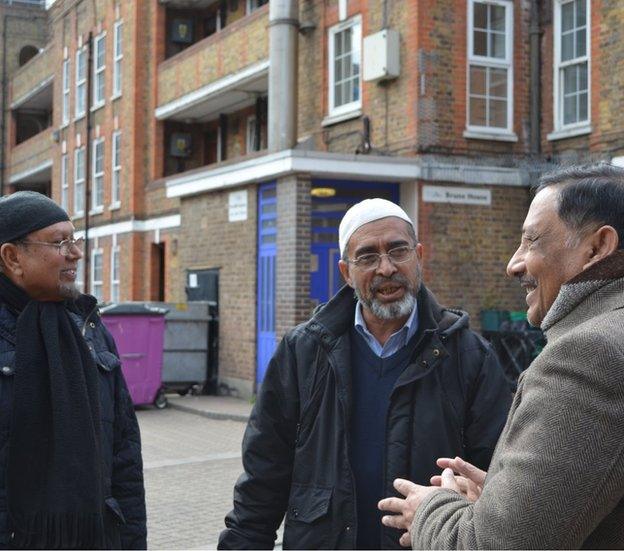
Not everyone is willing to move though.
Retired machinist Abdul Noor purchased his four-bedroom ex-council flat in the 1990s for about £300,000 under the right to buy scheme. He says he thought of it as his "home for life".
"We look out for each other here. Help out when we need to," he says.
"I went away on pilgrimage for two weeks and my neighbour agreed to look after my children for me. Where else would that happen?"
"This is 'social cleansing'. There is no other word for it," says Sharon Hayward, coordinator for the London Tenants Federation, external, which encourages residents to fight plans to gentrify areas.
She says in her experience "it almost always leads to the loss of social housing". Flats are typically rebuilt with a portion offered as "affordable housing", with rents set at up to 80% of market rate, instead of the 30% or 40% that social housing tenants pay.

EastendHomes says it has spent about £23m to date on refurbishment, repairs and building new affordable homes for local people which is let at social rent levels. It says there are now 39 more social homes on the estate than when it took over in 2006.
It also says under the terms of a compulsory purchase order valuations would be negotiated between Royal Institute of Chartered Surveyors accredited professionals, with leaseholders having the right of appeal to the Lands Tribunal.
The estate is not the only place to undergo rapid change, Spitalfields has also gentrified within a generation. Whereas the Bangladeshis who moved in during the 1970s were predominantly unskilled labourers, now their children are mainly office workers, teachers or social workers.
Phil Maxwell, a photographer and film maker who has been documenting the visual changes to the area since the 1980s, external, recalls when the Bangladeshis moved in during the 1970s and 1980s, there was a lot of overcrowding in the flats.
"That's why they originally started to meet up in Brick Lane, to chat and be together," he says. "They used it as their sitting room, if you like."
He says they now avoid it because of tourists and binge drinkers.
Bangladeshis have been joined by other ethnic groups and young professionals - as a result, so too businesses in the area have changed.
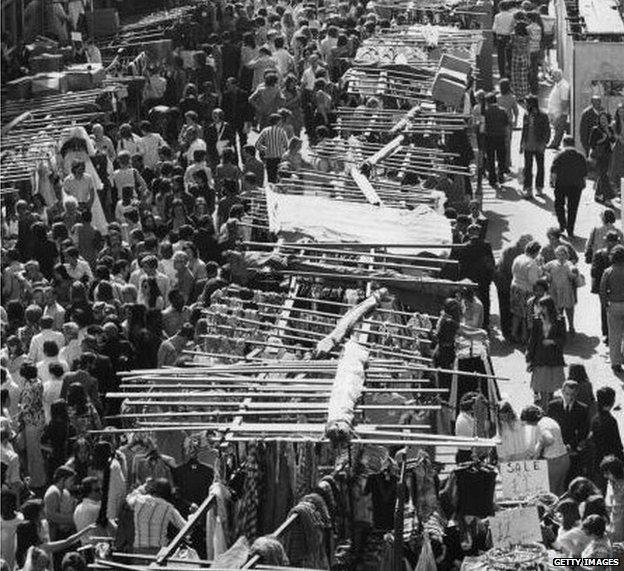
Resident Nasrin Ahmed says relatives used to visit Petticoat Lane Market for a day trip
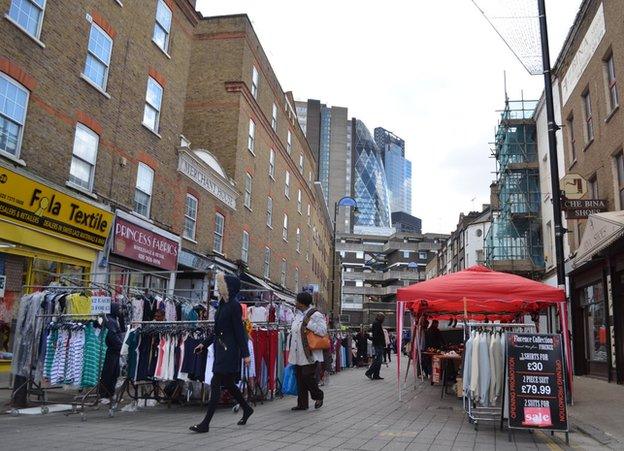
Now residents say Petticoat Lane market is dead, except on Sundays when the tourists come
Petticoat Lane Market, external has about a third of the stalls it used to 15 years ago, say residents, who describe it as "dead most of the week, except on Sundays when it is visited by tourists".
Spitalfields Market, external, once known for its independent arts and crafts stalls, is increasingly becoming populated by franchises that can afford the rent.
Mr Ahmed rejects the notion that change to the area was inevitable.
"Previous immigrants like the Huguenots, external and the Jews chose to move out of their own accord when their fortunes improved," he said.
"In this case, residents on the estate risk being left behind by the rapid rise in property prices they won't benefit from and ultimately they could be forced out".
"London is disappearing, it is losing its identity," says Crisis homeless charity worker Yolanda de los Buies, who has lived in Brune House, on the Holland Estate, for 18 years.
She says about 15 years ago Spitalfields used to have the highest density of artists anywhere in Europe but that has all changed now.
"Art and culture and community is being flattened by money making machines," she says. "London is becoming a luxury business and commuter city without soul.
"Rich people bring money but they don't bring anything else with them - no art, no culture, no community spirit."
- Published25 April 2015
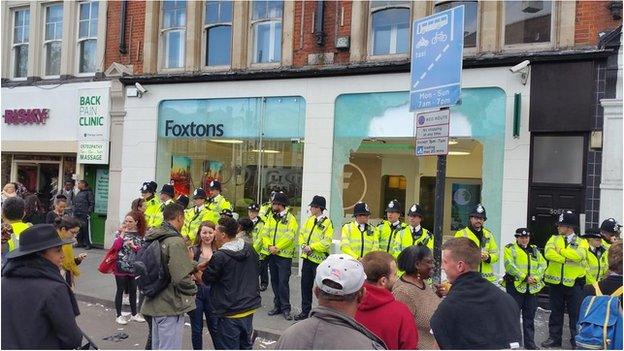
- Published5 March 2014
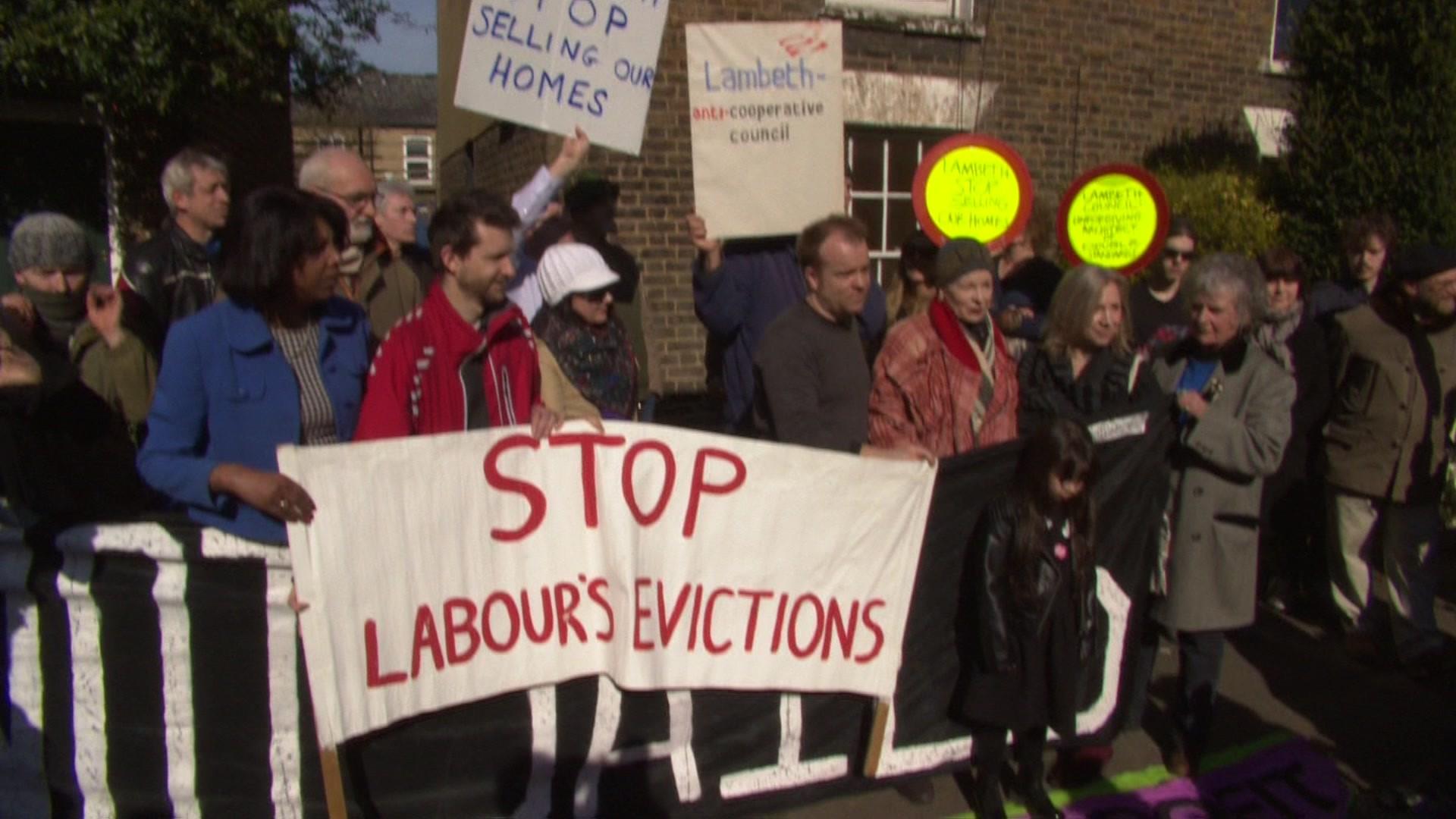
- Published24 September 2013

- Published27 June 2012
